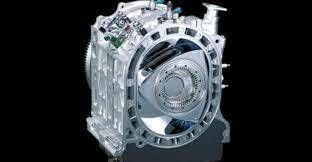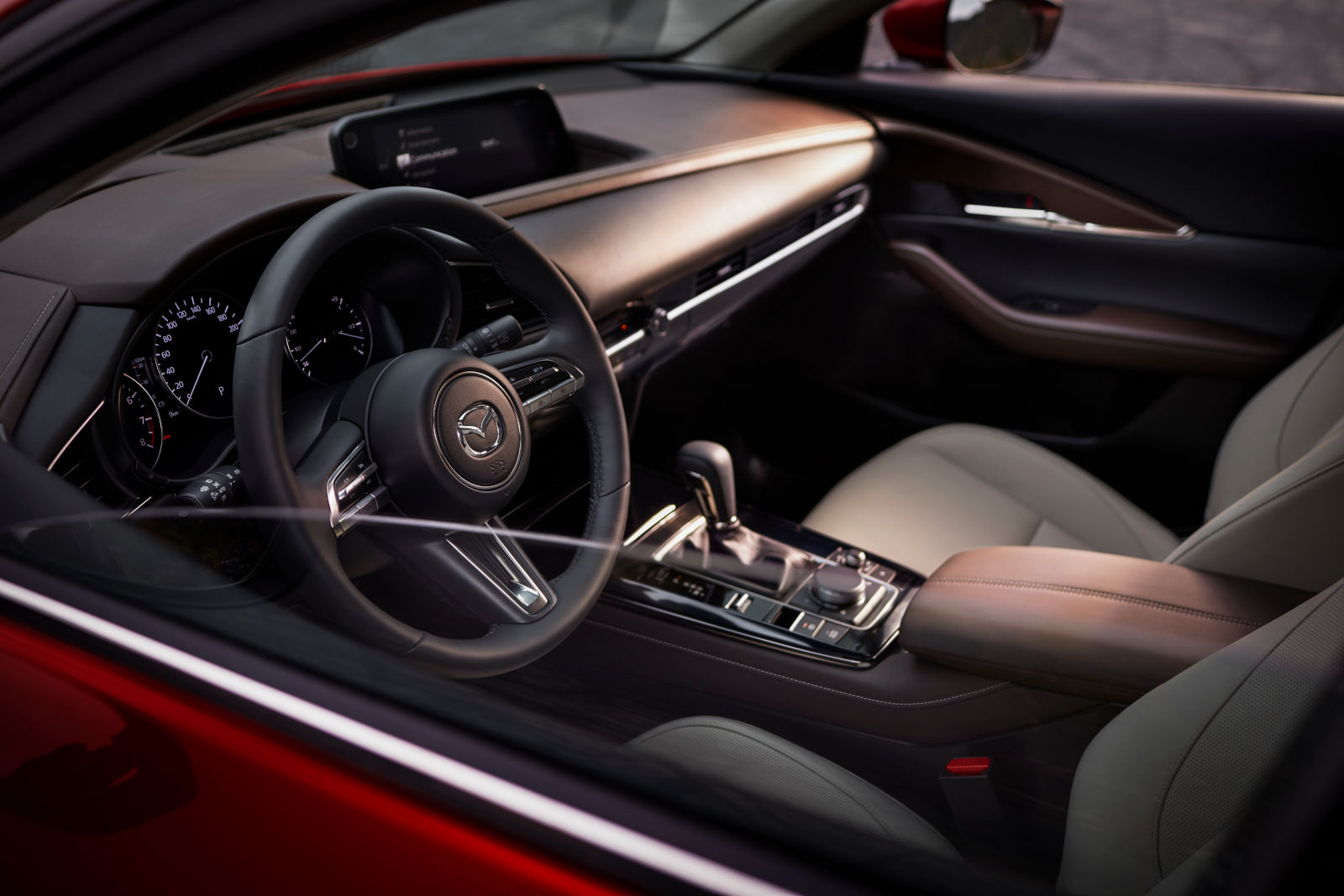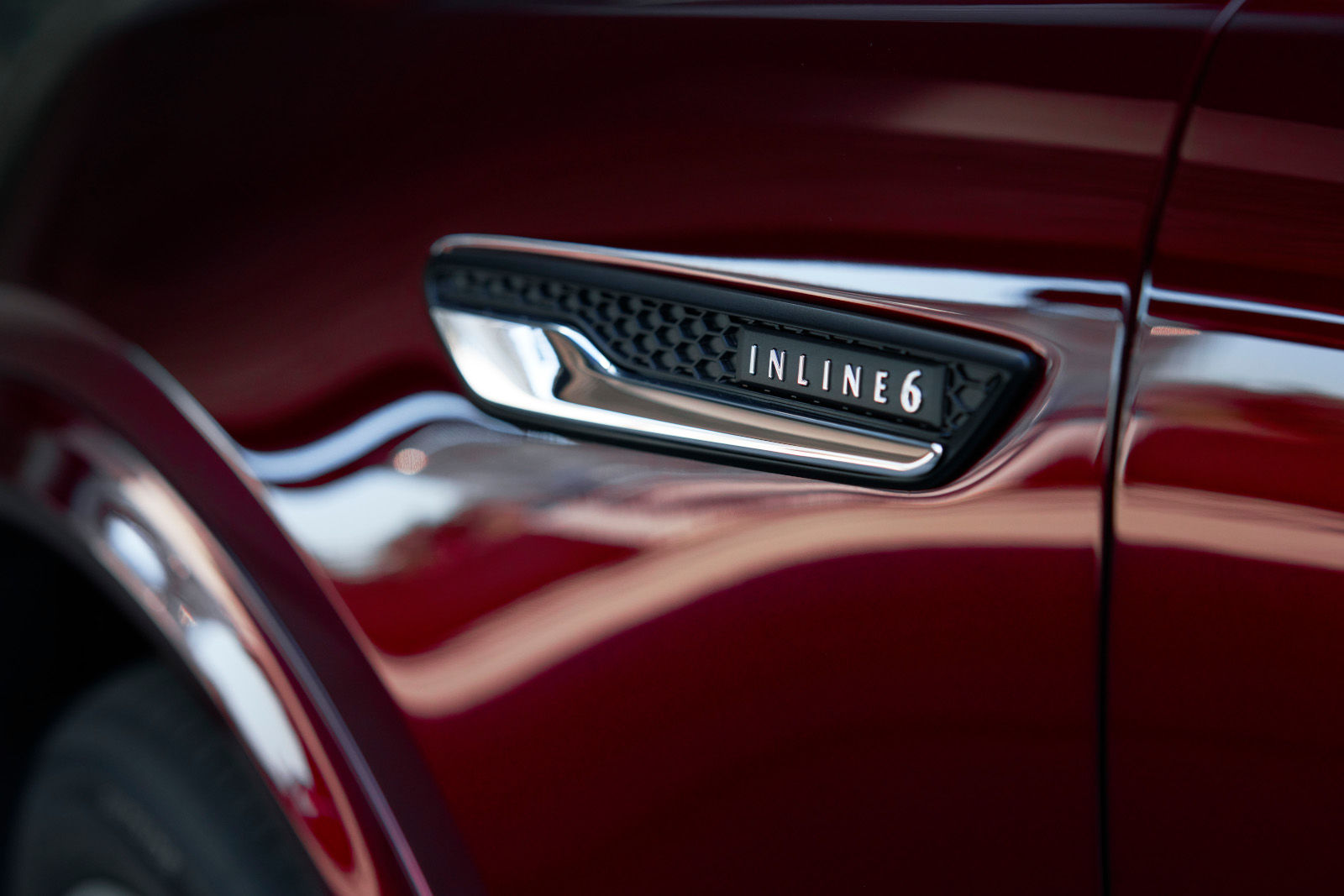MAZDA’S ‘HOLY GRAIL’ OF GASOLINE ENGINES IS COMPLETELY FASCINATING!
December 28 2018, Sydney Mazda

Mazda’s hotly anticipated SKYACTIV-X Spark Controlled Compression Ignition engine has been described as the “Holy Grail” of gasoline motors-something with diesel-like fuel economy, but far better efficiency. I went to Germany to talk to Mazda’s extremely nerdy engineers, and before I actually drove the thing, here’s what I learned.(Full Disclosure: Mazda wanted me to drive their SKYACTIV-X prototype, so the company flew me to Frankfurt, Germany, put a nice roof over my head, and fed me delicious foods whose names had more umlauts and Scharfes S’s than I could count.)
© Provided by Univision Interactive Media, Inc.
Mazda brought executive officers, VPs and managers from its powertrain, vehicle development, and research and development teams to explain to journalists how the SKYACTIV-X Spark Controlled Compression Ignition engine works, and why it matters.
mcp-3365541
In addition, Mazda discussed its all-new platform, which is where we’ll start before jumping into the exciting SPCCI engine goodness.
THE NEW PLATFORM
© Provided by Univision Interactive Media, Inc.
Despite having driven some prototype next-generation Mazda3s at the event in Frankfurt, I can’t really say much about its improvement over the outgoing bones. But the main points executive manager of vehicle development Hiroyuki Matsumoto stressed when talking about the new structure dealt with refinement. Matsumoto said that, in its effort to improve a driving feeling they call Jinba Ittai (“Connection between horse and rider”), the company studied the human gait to establish a “platform that optimizes human ability to balance.”
Photo: Mazda
© Provided by Univision Interactive Media, Inc. Photo: Mazda
Part of that involved designing the seat supports to “maintain natural S-curve of the spinal column by the erection of the driver’s pelvis” (you can see that below). Mazda also designed a new seat structure that’s apparently able to quickly and “smoothly transmit the energy input from vehicle body to the driver’s pelvis.”
Photo: Mazda
© Provided by Univision Interactive Media, Inc. Photo: Mazda
On top of that, Matsumoto told journalists that the body has been stiffened to reduce the transient response time between the input load on one damper, and the response load at the damper in the opposite corner. Mazda does this by using what it calls “ring structures” (shown in the dotted green circles below):
Photo: Mazda
© Provided by Univision Interactive Media, Inc. Photo: Mazda
The engineer also mentioned suspension and tire changes aimed at smoothly controlling energy transfer from the wheel to the body, as well as NVH changes like the 16 locations outfitted with damping resin (the two small squares shown below), which is meant to quench unwanted vibrations.
© Provided by Univision Interactive Media, Inc.
Ultimately, Mazda’s main points when discussing the new platform seemed to revolve around driver comfort, with emphasis on ride quality, noise, and the way the car communicates inputs to the driver’s ass.Unfortunately, I didn’t spend enough time in the prototype to really assess how much better this platform is than the last. We’ll have to wait for a long-term test for that.
THE BENEFITS OF COMPRESSION IGNITION
© Provided by Univision Interactive Media, Inc.
To understand the whole point behind Mazda’s new gasoline compression engine tech, let’s look at the seven factors the company works to improve upon to increase internal combustion engine efficiency (shown on the left of the graphic below). They are: compression ratio, specific heat ratio, combustion period, combustion timing, heat transfer to the wall, differential pressure between intake and exhaust, and mechanical friction.
Photo: Mazda
© Provided by Univision Interactive Media, Inc. Photo: Mazda
Improving these attributes theoretically leads towards the “ideal” internal combustion engine, and SKYACTIV-X takes a number of steps in the right direction.Higher Compression Ratio And Specific Heat Ratio
Photo: Mazda
© Provided by Univision Interactive Media, Inc. Photo: Mazda
Mazda mentions in its presentation that combustion engine efficiency is related to compression ratio and the intake charge’s specific heat ratio via the equation above. In other words, cranking up compression ratio and specific heat ratios yields better efficiency.SKYACTIV-G, Mazda’s current generation of gasoline engine technology, used a clever exhaust system, a piston cavity, and a high-pressure fuel system with multi-hole injectors to prevent knocking and to allow for a ridiculously high 14:1 compression ratio. SKYACTIV-X, a compression ignition engine, cranks that figure up to between 15:1 and 16:1.
As for bumping up that specific heat ratio (“k”) value, Mazda says running the engine lean and decreasing its combustion temperature takes care of that. We know that k for air is about 1.4, and k for fuel vapor tends to be 1.33 or less. That means the more air you can put into that air:fuel charge, the higher that overall k value, and thus the greater the efficiency.
Photo: Mazda
© Provided by Univision Interactive Media, Inc. Photo: Mazda
Decreased combustion temperatures are a result of lean burn (and indeed, why NOx emissions are so low for this type of engine). The benefit, Mazda shows in the plot above, is that the lower combustion temperatures mean less energy is lost “to molecular vibrations and decomposition.” Thus, a lower combustion temperature yields a higher k, which-again-means better efficiency.
Combustion Period And Timing
Photo: Mazda
© Provided by Univision Interactive Media, Inc. Photo: Mazda
Aside from the higher compression ratio and specific heat ratio it allows, compression ignition engines tend to burn their lean mixtures thoroughly and rapidly. This means energy from combustion can be more efficiently translated into work done on the piston, whereas spark ignition engines tend to involve a significant time delay associated with flame propagation.
Pumping Losses And Heat Loss Through Cylinders
Photo: Mazda
© Provided by Univision Interactive Media, Inc. Photo: Mazda
The other two areas where a lean compression engine can yield significant efficiency benefits is in cooling losses and throttling losses. The first is fairly straightforward, as lower combustion temperatures mean less heat transferred to the cylinder walls.
The second has to do with the fact that a leaner air/fuel mixture means there’s more air required for a given torque level. This-along with strategic use of EGR, variable valve timing and a supercharger to control airflow into the cylinder- means the throttle plate can be held fully open more often than on a standard gasoline engine.So instead of trying to suck air through a restrictive throttle plate, air can flow easily into the cylinders. Mazda says this also has the added benefit of improved throttle response, since there’s no longer a delay in trying to fill the intake plenum.
Emissions
© Provided by Univision Interactive Media, Inc.
Mazda’s new technology also promises reduced emissions, which is a big deal, since Dieselgate is putting a huge damper on compression engines. With internal combustion engines, oxides of nitrogen tend to rise with a higher air:fuel ratio up to a point.
Above that point, NOx output drops (as you can see from this plot). Since Mazda’s new engine usually runs at a lambda (fuel:air ratio relative to stoichiometric) of at least 1.5, its NOx output is rather low, and can therefore forgo expensive emissions equipment. Carbon emissions, too, are reduced with SPCCI due to its higher fuel efficiency.
HOW MAZDA’S SPCCI SYSTEM WORKS, EXACTLY
© Provided by Univision Interactive Media, Inc.
A gasoline compression ignition engine isn’t exactly a new concept. In fact, if you go back an entire decade, you’ll see that General Motors even had prototype Homogeneous Charge Compression Ignition engines (with spark assist) ready for journalists to drive around the test track. Why, then, is everyone getting excited about Mazda’s gasoline compression engine when we’ve been hearing about similar technologies for years?The answer comes down to how Mazda’s controlling combustion. The two main issues that Mazda says has impeded the proliferation of gasoline compression engines are: 1. The limited zone in which compression ignition is possible and 2. The rough transition between compression and spark ignition.What Mazda has done to solve these problems is devise a system called Spark Controlled Compression Ignition, SPCCI, a strategy in which a spark plug creates a “fire ball,” which acts to compress the homogeneous mixture of air/inert EGR gases and fuel to incite compression ignition.Photo: Mazda
© Provided by Univision Interactive Media, Inc. Photo: Mazda
Here’s another look from the top of the cylinder look:
Photo: Mazda
© Provided by Univision Interactive Media, Inc. Photo: Mazda
The spark plug itself isn’t able to create this fireball with a lean mixture. So what Mazda has done is positioned a fuel injector close to the plug. That high-pressure injector initially shoots small amounts of fuel into the cylinder during the intake stroke. That fuel mixes with a cyclone of air from the intake (which is fed from a supercharger and cooled EGR-both of which can be precisely controlled) to create a homogeneous lean mixture around the periphery.
Photo: Mazda
© Provided by Univision Interactive Media, Inc. Photo: Mazda
During the compression stroke, a certain amount of fuel is injected into the “eye” of the lean vortex (an amount based on engine load), and spark is precisely timed to light the rich fireball, which then ignites the lean mixture around it-and voila! you have compression ignition. (Note that this late injection of fuel during the compression stroke is Mazda’s way of preventing preignition; to accomplish this requires a high-pressure injection system.)
Actuators
Photo: Mazda
© Provided by Univision Interactive Media, Inc. Photo: Mazda
The beautiful thing about SPCCI is that, because it relies on a spark to catalyze compression ignition-unlike homogeneous charge compression ignition engines we’ve seen from other automakers, which rely solely on mechanical compression-combustion can be fairly well controlled. Using a number of sensors including in-cylinder pressure sensors and intake temperature sensors, Mazda’s new engine can monitor directly or indirectly things like intake temperature, cylinder pressures, humidity, coolant temperature, oil temperature, air:fuel ratio, and EGR percentage.The computer receives inputs from a number of sensors every cycle, and uses them to make precise adjustments to things like injection timing, spark timing, valve timing (which can, for example, hold an exhaust valve open during the intake stroke to act as “internal EGR” to warm the combustion chamber during cold starts), cooled EGR output (which can actually cool the combustion chamber with its inert gas, and adjust the gas:fuel ratio), supercharger speed (the supercharger has an integral clutch), and even Belt Starter Generator torque (a small motor that could be used to help smooth out the engine’s operation, especially in transient driving conditions).
graphic: Mazda
© Provided by Univision Interactive Media, Inc. graphic: Mazda
An example of how Mazda uses inputs to control combustion is shown above. At the top left, you’ll see the goal heat-release curves as a function of crankshaft angle. Mazda uses inputs from in-cylinder pressure sensors and intake air temperature sensors to make adjustments to spark timing, advancing ignition of that fireball (virtual piston) to achieve compression ignition precisely at the right moment regardless of intake air temperature to maximize the work done to push down the piston.
REAL-WORLD BENEFITS TO THE DRIVER
More Power and Torque, Better And More Consistent Fuel Economy
Photo: Mazda
© Provided by Univision Interactive Media, Inc. Photo: Mazda
Mazda’s goal peak output figures for the new engine are 170 lb-ft or torque and 187 horsepower, both of which are higher than today’s gasoline SKYACTIV-G engine of the same displacement. Mazda says its priority above peak figures is “a wide and useful range of torque…to ensure the best possible drivability.”That drivability is aided by a flatter fuel consumption curve that Mazda says allows the car to incorporate a numerically higher final drive ratio-which yields higher engine speeds and thus better response times-without worrying about major fuel economy detriments.
Photo: Mazda
© Provided by Univision Interactive Media, Inc. Photo: Mazda
The reduced sensitivity of SKYACTIV-X’s fuel ecoomy to RPM/load tradeoffs not only promises improved acceleration performance, but also better real-world fuel economy figures.As Mazda points out in the plots below, fuel economy drive cycles conducted by agencies around the world leave out a significant number of engine operating points. By having a flat fuel efficiency curve, Mazda says its new engine is more likely to achieve the fuel economy shown on the label.
© Provided by Univision Interactive Media, Inc.
IT ALL SEEMS VERY PROMISING
© Provided by Univision Interactive Media, Inc.
The SKYACTIV-X engine represents Mazda’s “Quest to make the best internal combustion engine in the world.” Achieving that goal is arguably impossible, but whether Mazda can come close depends on how well its engineers able to cash in on the promised benefits of the technology.
If this engine can really provide over their current gas engine 20 percent better fuel economy, a flatter and taller torque curve, more consistent real-world fuel economy, low emissions, and better vehicle response, all at a relatively reasonable price (since, after all, the sensors and actuators are all existing technologies), they’ll have a major success on their hands.I, for one, hope they pull it off.
To view original article, click here





